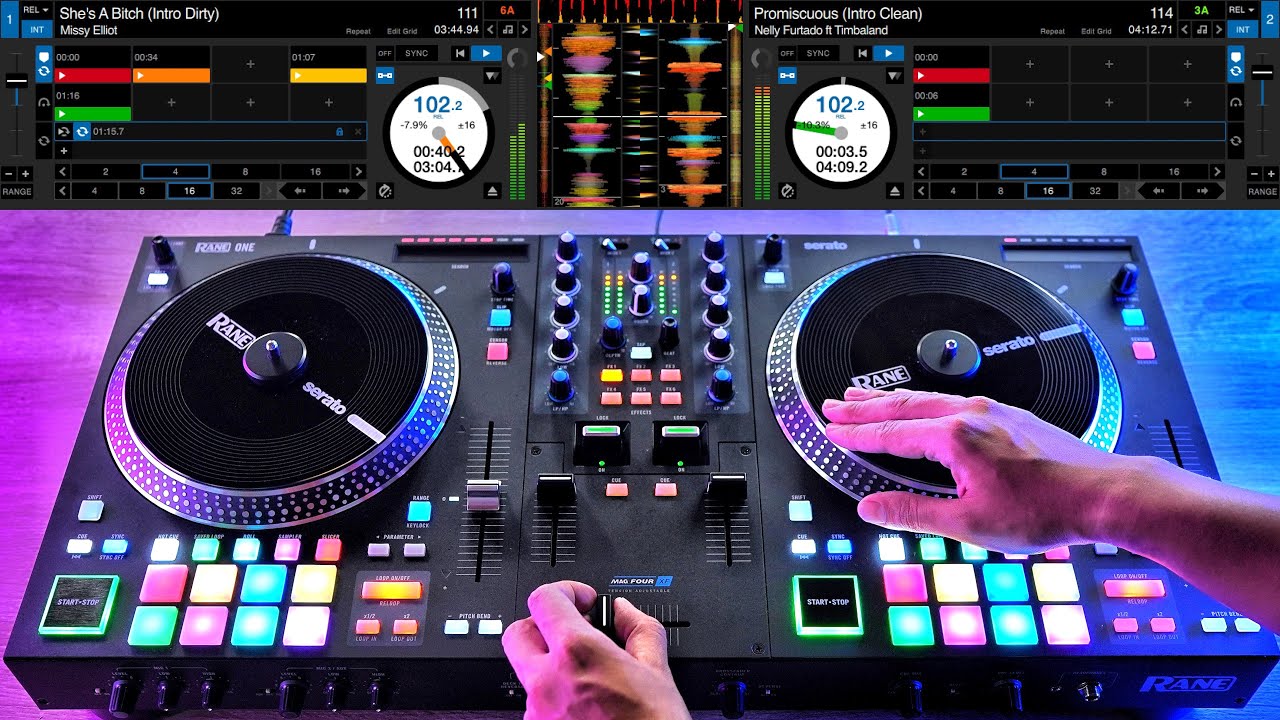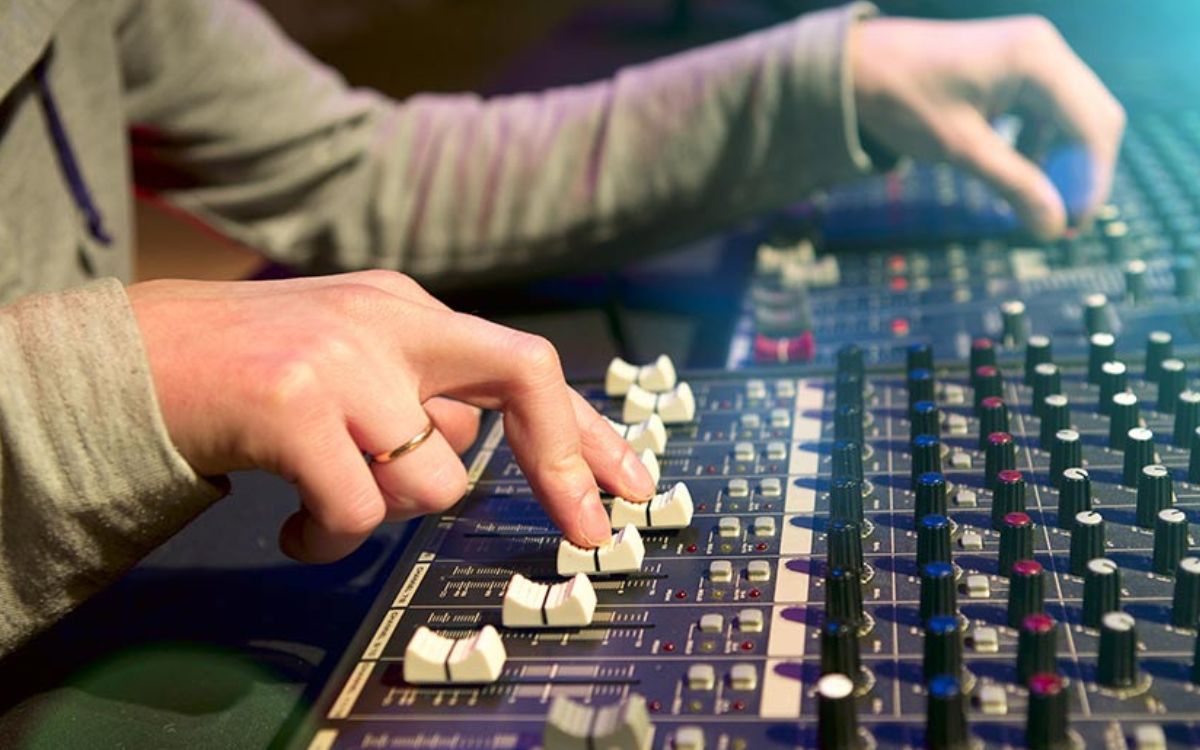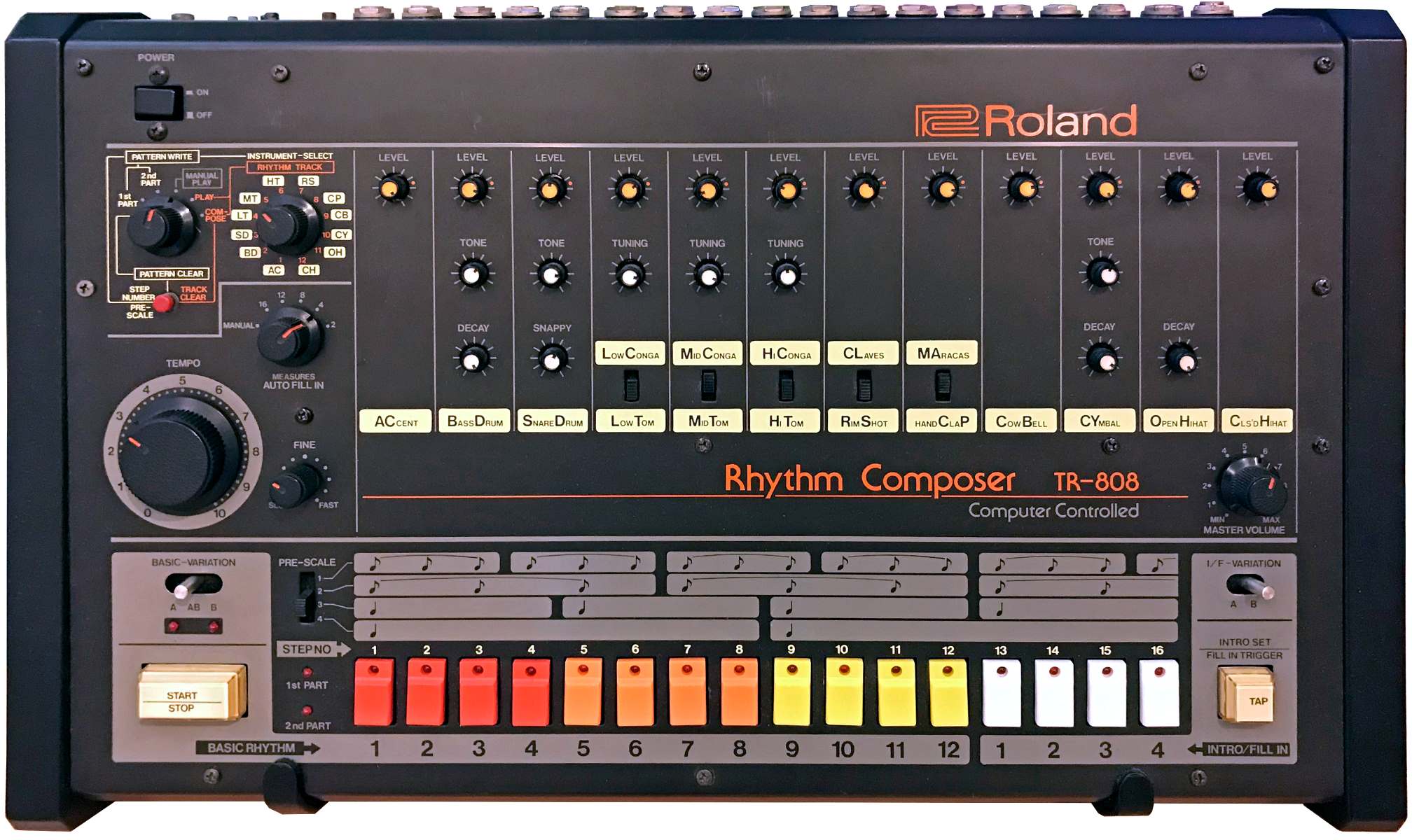Home>Production & Technology>DJ>How To Master DJ Mix


DJ
How To Master DJ Mix
Modified: March 4, 2024
Learn how to become a master DJ with our comprehensive guide. Discover essential tips and techniques to elevate your DJ mixes and performances.
(Many of the links in this article redirect to a specific reviewed product. Your purchase of these products through affiliate links helps to generate commission for AudioLover.com, at no extra cost. Learn more)
Table of Contents
Introduction
DJ mixing is an art form that seamlessly blends different tracks into a cohesive and engaging musical experience. Whether you're an aspiring DJ or a music enthusiast looking to delve into the world of mixing, mastering the craft can be a rewarding and exhilarating journey. From understanding the fundamentals of beatmatching to creating smooth transitions and reading the crowd, the art of DJ mixing encompasses a diverse set of skills that require both technical prowess and a keen ear for music.
In this comprehensive guide, we will explore the essential techniques and principles that form the foundation of mastering DJ mixing. By delving into the intricacies of equipment selection, beatmatching, phrasing, song structure, and the art of building a set, you will gain valuable insights into the art of DJ mixing. Moreover, we will delve into the nuances of mastering EQ and effects to elevate your mixes to new heights, ensuring that every transition and blend is executed with finesse and precision.
Whether you're a novice looking to embark on your DJing journey or a seasoned enthusiast seeking to refine your skills, this guide is designed to equip you with the knowledge and expertise needed to elevate your DJ mixing abilities. By the end of this journey, you will have a deeper understanding of the art of DJ mixing and be well-prepared to embark on your own creative musical endeavors. So, let's dive into the world of DJ mixing and unlock the secrets to crafting seamless and captivating musical journeys that resonate with audiences and leave a lasting impression.
Understanding the Basics of DJ Mixing
DJ mixing is a multifaceted art form that revolves around seamlessly blending and transitioning between different tracks to create a continuous and harmonious musical experience. At its core, DJ mixing involves the manipulation of various elements within a song, such as tempo, rhythm, and tonality, to create a cohesive and dynamic sonic journey. Understanding the basics of DJ mixing is essential for aspiring DJs, as it forms the groundwork upon which more advanced techniques and skills are built.
Fundamentally, DJ mixing involves the use of a DJ mixer, which serves as the central hub for controlling and manipulating audio sources. This includes adjusting volume levels, applying equalization (EQ), and seamlessly transitioning between tracks. Additionally, DJs utilize headphones to preview and cue upcoming tracks, allowing for precise synchronization and seamless transitions during live performances.
One of the fundamental concepts in DJ mixing is beatmatching, which involves aligning the tempos of two tracks to ensure a smooth transition between them. By synchronizing the beats of two songs, DJs can seamlessly blend from one track to another, maintaining a consistent rhythm and energy throughout the mix. This skill is crucial for crafting a seamless and uninterrupted musical experience that captivates audiences and keeps them engaged on the dance floor.
In addition to beatmatching, understanding phrasing is another essential aspect of DJ mixing. Phrasing refers to the structure of a song, including the arrangement of musical elements such as verses, choruses, and breakdowns. By recognizing the phrasing of tracks, DJs can strategically blend and transition between songs at opportune moments, enhancing the flow and coherence of the mix.
Moreover, gaining a foundational understanding of music theory, including rhythm, melody, and harmony, can significantly enhance a DJ's ability to create compelling mixes. This knowledge allows DJs to identify compatible tracks based on key and tonality, facilitating seamless harmonic transitions that resonate with listeners.
By mastering the basics of DJ mixing, including beatmatching, phrasing, and music theory, aspiring DJs can lay a solid foundation for their journey into the art of crafting captivating and seamless musical experiences. These fundamental skills serve as the building blocks upon which more advanced techniques and creative expression can be developed, setting the stage for an exciting and rewarding exploration of the art of DJ mixing.
Choosing the Right Equipment
Selecting the appropriate equipment is a pivotal step in the journey of mastering DJ mixing. The right gear not only empowers a DJ to execute seamless transitions and manipulations but also plays a crucial role in shaping the overall sonic quality of the mixes. When it comes to choosing the right equipment, several key factors come into play, each contributing to the overall performance and creative capabilities of the DJ.
1. DJ Controller or Turntables
The choice between a DJ controller and traditional turntables is often a fundamental decision for aspiring DJs. DJ controllers offer a compact and versatile solution, integrating features such as jog wheels, performance pads, and built-in mixers. On the other hand, turntables provide a tactile and authentic vinyl experience, catering to DJs who prefer the hands-on approach of manipulating physical records. Understanding the workflow and preferences can guide the selection between these two options.
2. Mixer and Audio Interface
A high-quality mixer serves as the central control hub for blending and manipulating audio sources. It is essential to choose a mixer that offers precise EQ controls, smooth faders, and intuitive effects processing. Additionally, an audio interface plays a crucial role in ensuring high-fidelity audio output and seamless connectivity with external devices, such as laptops and audio interfaces.
3. Headphones and Monitors
Investing in professional-grade headphones is paramount for DJs, as accurate monitoring and cueing are essential for beatmatching and seamless transitions. Similarly, quality studio monitors contribute to an optimal listening environment, allowing DJs to fine-tune their mixes and ensure the sonic balance and clarity of their performances.
4. Software and Digital Tools
The choice of DJ software can significantly impact the creative workflow and capabilities of a DJ. Whether opting for industry-standard software like Serato DJ or exploring the versatility of Traktor Pro, selecting the right software that aligns with one's mixing style and preferences is crucial. Moreover, integrating digital tools such as MIDI controllers and effects units can further expand the creative possibilities and technical capabilities of a DJ.
In essence, choosing the right equipment involves a thoughtful consideration of the DJ's workflow, preferences, and creative aspirations. By carefully evaluating the features, functionality, and compatibility of various gear options, DJs can curate a setup that empowers them to unleash their creativity and deliver captivating performances that resonate with audiences. The right equipment forms the cornerstone of a DJ's artistic expression, enabling them to craft seamless and immersive musical experiences that leave a lasting impression.
Learning Beatmatching and Phrasing
Mastering the art of beatmatching is a fundamental skill that lies at the heart of DJ mixing. Beatmatching involves aligning the tempos of two tracks to ensure a seamless transition between them, creating a continuous and uninterrupted flow of music. This technique is essential for maintaining the energy and rhythm of a mix, captivating audiences, and keeping them engaged on the dance floor.
Beatmatching begins with identifying the tempo of each track, typically measured in beats per minute (BPM). By leveraging the pitch control on the DJ mixer or software, DJs can adjust the tempo of one track to match that of the other, ensuring that the beats align harmoniously. This process requires a keen ear for rhythm and timing, as well as a deep understanding of musical structure and phrasing.
In addition to tempo synchronization, beatmatching involves precise cueing and timing to initiate the transition between tracks at the opportune moment. DJs often utilize headphones to preview the incoming track and cue it up in sync with the currently playing track, allowing for a seamless and precise transition. This level of precision and timing is crucial for creating a fluid and cohesive mix that resonates with the audience and maintains a consistent groove.
Phrasing, another critical aspect of DJ mixing, revolves around understanding the structure and arrangement of songs. By recognizing the natural progression of musical elements within a track, such as verses, choruses, and breakdowns, DJs can strategically blend and transition between songs at pivotal moments. This skill enhances the coherence and narrative flow of the mix, creating a dynamic and engaging musical journey for the audience.
Moreover, phrasing allows DJs to anticipate and execute transitions that align with the natural ebb and flow of the music, amplifying the emotional impact and energy of the mix. By harmonizing the phrasing of two tracks, DJs can seamlessly blend elements such as vocals, melodies, and rhythms, creating a captivating fusion that resonates with the audience on a visceral level.
Ultimately, mastering beatmatching and phrasing empowers DJs to craft seamless and immersive musical experiences that transcend individual tracks, weaving them into a cohesive and captivating sonic tapestry. These skills form the bedrock of DJ mixing, enabling DJs to create dynamic and fluid mixes that captivate audiences, elevate the energy of the dance floor, and leave a lasting impression on listeners.
Understanding Song Structure and Key Mixing
Understanding the intricacies of song structure and key mixing is paramount for DJs aiming to elevate their mixing prowess and deliver captivating performances. Song structure refers to the arrangement and organization of musical elements within a track, encompassing components such as verses, choruses, bridges, and breakdowns. By comprehending the dynamics of song structure, DJs can strategically blend and transition between tracks, creating a seamless and engaging musical narrative.
Moreover, delving into the concept of key mixing, which involves harmonizing the tonalities of different tracks, allows DJs to create harmonically coherent and musically rich transitions. Key mixing revolves around identifying the musical key of each track, typically denoted by a specific musical scale or chord progression, and seamlessly transitioning between tracks that share compatible or complementary keys.
Key mixing not only enhances the sonic cohesion of a mix but also contributes to the emotional resonance and fluidity of transitions. By aligning tracks in harmonically compatible keys, DJs can create seamless and melodically resonant transitions, elevating the emotional impact and musical continuity of the mix.
Furthermore, understanding song structure and key mixing empowers DJs to craft dynamic and immersive musical journeys that transcend individual tracks, weaving them into a cohesive and captivating sonic tapestry. By strategically aligning the phrasing and tonality of tracks, DJs can create seamless transitions that resonate with audiences on a visceral and emotional level, elevating the overall impact of the mix.
Incorporating key mixing techniques into a DJ's repertoire not only enriches the sonic quality of the mix but also showcases a nuanced understanding of musical theory and composition. By seamlessly blending tracks in compatible keys, DJs can create a fluid and harmonically rich musical experience that captivates audiences and leaves a lasting impression.
Ultimately, mastering the nuances of song structure and key mixing empowers DJs to craft seamless and immersive musical experiences that transcend individual tracks, weaving them into a cohesive and captivating sonic tapestry. These skills form the bedrock of DJ mixing, enabling DJs to create dynamic and fluid mixes that captivate audiences, elevate the energy of the dance floor, and leave a lasting impression on listeners.
Mastering EQ and Effects
Mastering the art of utilizing EQ (equalization) and effects is a pivotal aspect of honing a DJ's mixing skills. EQ serves as a powerful tool for shaping the tonal balance and sonic characteristics of individual tracks, allowing DJs to enhance clarity, emphasize specific frequencies, and create a cohesive sonic landscape within their mixes.
Understanding the nuances of EQ involves recognizing the different frequency bands, such as bass, midrange, and treble, and their impact on the overall sonic profile of a track. DJs can utilize EQ to sculpt the tonal balance of each track, ensuring that elements such as vocals, melodies, and percussion are presented with clarity and impact. By delicately adjusting the EQ settings, DJs can tailor the sonic characteristics of each track to seamlessly integrate into the mix, creating a harmonious and balanced sonic environment.
Furthermore, effects play a crucial role in adding depth, texture, and dynamics to a DJ's mixes. From reverb and delay to filters and modulation, effects offer a palette of creative possibilities for enhancing the sonic narrative of a mix. DJs can use effects to create atmospheric transitions, add rhythmic embellishments, and imbue tracks with a sense of spatial depth and movement. By skillfully integrating effects, DJs can elevate the emotional resonance and immersive quality of their mixes, captivating audiences and creating a captivating sonic journey.
Moreover, understanding the subtleties of using effects in moderation is essential, as it allows DJs to enhance the sonic narrative without overwhelming the mix. By judiciously applying effects at strategic moments, DJs can create impactful transitions, build tension and release, and infuse their mixes with a sense of drama and excitement. This level of finesse and creativity amplifies the overall impact of the mix, leaving a lasting impression on listeners and elevating the artistry of the DJ's performance.
In essence, mastering EQ and effects empowers DJs to sculpt the sonic landscape, shape the emotional resonance, and craft immersive and captivating musical experiences. By leveraging EQ to refine the tonal balance of tracks and integrating effects to add depth and texture, DJs can elevate their mixes to new heights, creating seamless and dynamic sonic journeys that resonate with audiences and leave a lasting impression.
Creating Smooth Transitions
Crafting smooth transitions is a hallmark of a skilled DJ, elevating the art of mixing to a seamless and immersive experience for the audience. Smooth transitions not only maintain the energy and flow of a mix but also create a sense of continuity that transcends individual tracks, weaving them into a cohesive sonic tapestry. Achieving smooth transitions requires a combination of technical proficiency, musical intuition, and a deep understanding of the nuances of each track.
One of the key techniques for creating smooth transitions is the use of precise cueing and timing. By leveraging headphones to cue up the incoming track and aligning it with the currently playing track, DJs can execute seamless transitions with impeccable timing. This level of precision ensures that the transition is imperceptible to the audience, maintaining a consistent groove and rhythm throughout the mix.
Additionally, utilizing EQ and filters during transitions can enhance the fluidity and coherence of the mix. By gradually adjusting the EQ and applying filters to both tracks, DJs can seamlessly blend elements such as vocals, melodies, and rhythms, creating a harmonious fusion that resonates with the audience. This level of sonic finesse adds depth and dimension to transitions, captivating listeners and immersing them in a fluid and dynamic musical journey.
Moreover, understanding the phrasing and structure of tracks is essential for crafting smooth transitions. By recognizing opportune moments within a track, such as breakdowns or build-ups, DJs can strategically initiate transitions that align with the natural ebb and flow of the music. This intuitive approach ensures that transitions feel organic and fluid, enhancing the overall coherence and narrative flow of the mix.
Furthermore, incorporating creative techniques such as backspins, echo outs, and acapella blends can add flair and dynamism to transitions, elevating the excitement and impact of the mix. These creative flourishes inject a sense of drama and anticipation into transitions, captivating the audience and creating moments of heightened energy and emotion.
In essence, creating smooth transitions is a blend of technical precision, musical intuition, and creative finesse. By mastering the art of seamless transitions, DJs can elevate their mixes to new heights, captivating audiences and delivering captivating and immersive musical experiences that leave a lasting impression.
Building a Set and Reading the Crowd
Crafting a compelling DJ set involves a delicate balance of musical selection, energy management, and intuitive reading of the audience. Building a set that resonates with the crowd requires a nuanced understanding of musical dynamics, genre preferences, and the ability to gauge and respond to the energy of the audience in real time.
The process of building a set begins with thoughtful track selection, considering factors such as tempo, mood, and sonic texture. DJs curate a diverse yet cohesive selection of tracks that build and release energy, creating a dynamic and engaging musical journey. By strategically arranging tracks with varying intensities, DJs can shape the emotional arc of the set, guiding the audience through moments of anticipation, euphoria, and release.
Furthermore, reading the crowd is an essential skill that allows DJs to adapt their set in response to the audience's energy and feedback. By observing the dance floor, gauging audience reactions, and interpreting non-verbal cues, DJs can tailor their track selection and transitions to maintain a seamless connection with the crowd. This intuitive responsiveness enables DJs to create an immersive and participatory experience, fostering a sense of synergy and shared musical enjoyment.
Moreover, understanding the ebb and flow of energy within a set is crucial for sustaining audience engagement. DJs strategically introduce peaks and valleys in the set, alternating between high-energy anthems and more subdued tracks to create a dynamic and captivating sonic journey. This thoughtful energy management ensures that the audience remains captivated and energized throughout the set, fostering a sense of anticipation and emotional resonance.
Incorporating elements of surprise and spontaneity further enriches the set, keeping the audience engaged and intrigued. DJs can introduce unexpected tracks, remixes, or live mashups to inject moments of excitement and novelty into the set, creating memorable and immersive experiences for the audience.
Ultimately, building a set and reading the crowd is a dynamic and interactive process that fuses musical artistry with audience engagement. By curating a diverse yet cohesive selection of tracks, intuitively responding to the crowd's energy, and crafting a dynamic emotional arc, DJs can create immersive and unforgettable musical experiences that resonate with the audience and leave a lasting impression.
Conclusion
In conclusion, mastering the art of DJ mixing is a journey that encompasses a rich tapestry of skills, techniques, and creative expression. From understanding the fundamental principles of beatmatching and phrasing to harnessing the power of EQ, effects, and seamless transitions, the art of DJ mixing offers a boundless realm of creative possibilities. By delving into the nuances of song structure, key mixing, and energy management, DJs can craft immersive and captivating musical experiences that resonate with audiences and leave a lasting impression.
Aspiring DJs embarking on their mixing journey are encouraged to cultivate a deep understanding of musical theory, song structure, and the emotional dynamics of a set. By honing their technical proficiency and embracing a spirit of creative exploration, DJs can elevate their mixes to new heights, creating seamless and dynamic sonic journeys that captivate audiences and foster a sense of shared musical enjoyment.
Furthermore, the art of building a set and reading the crowd is an integral aspect of DJ mixing, requiring a keen intuition and an ability to adapt and respond to the energy of the audience. By curating sets that balance anticipation, euphoria, and release, DJs can create immersive and participatory experiences that forge a profound connection with the audience, fostering a sense of musical synergy and shared enjoyment.
In essence, mastering the art of DJ mixing is a multifaceted and exhilarating pursuit that transcends technical proficiency, encompassing a deep understanding of musical narrative, emotional resonance, and the transformative power of music. As DJs continue to refine their skills and expand their creative horizons, they contribute to a rich tapestry of musical experiences, leaving an indelible mark on the hearts and minds of their audience.
Ultimately, the art of DJ mixing is a celebration of creativity, expression, and the universal language of music. It is a journey that invites individuals to embrace their passion for music, connect with others through shared experiences, and craft immersive and unforgettable sonic landscapes that resonate with the soul. As the journey continues, aspiring DJs are poised to embark on a path of artistic discovery, innovation, and the timeless pursuit of creating moments of musical magic that transcend time and space.











